Scikit‑learn (also styled as scikit-learn) is one of the most popular Python libraries for machine learning. It offers a consistent API for tasks such as classification, regression, clustering, dimensionality reduction, model selection, and preprocessing.
Installing scikit‑learn is straightforward, whether you use plain pip, the Anaconda distribution, or prefer to build from source.
In this article, we’ll walk through the pip approach to install Scikit-learn in Windows. Before you begin, make sure you have an internet connection on your computer.
Watch: Install Pandas On Python 3.13.3
Install Scikit-learn In Windows
You can use pip, Anaconda, or Jupyter Notebooks to install Scikit-learn. The most straightforward method, however, uses pip, which is the standard package manager for Python that can be use to download, update and manage the standard package libraries. Follow these steps to install Scikit-learn using pip:
Ensure you have the latest version of Python installed on your computer. If you haven’t, here’s how.
Next, verify whether you have the Pandas module to do this, type IDLE in the search bar of your computer an hit the Enter key. Integrated Development and Learning Environment (IDLE) enables you to run your Python programs.
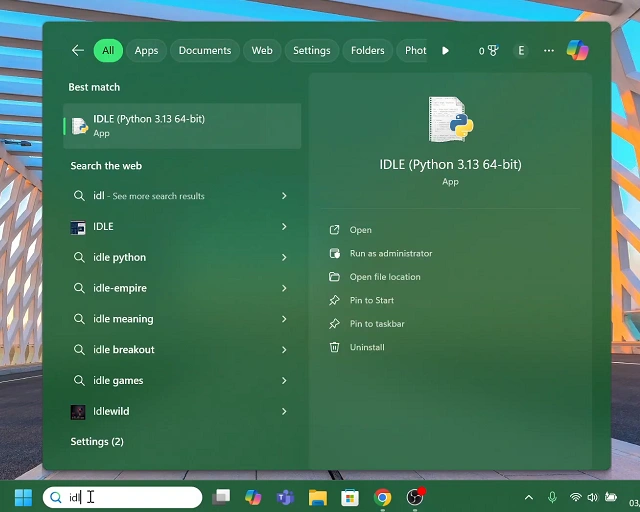
Inside IDLE, type import sklearn then press Enter. If an error is returned, then it means that Scikit-learn is not installed. Close IDLE if this is the case to proceed to the next step.
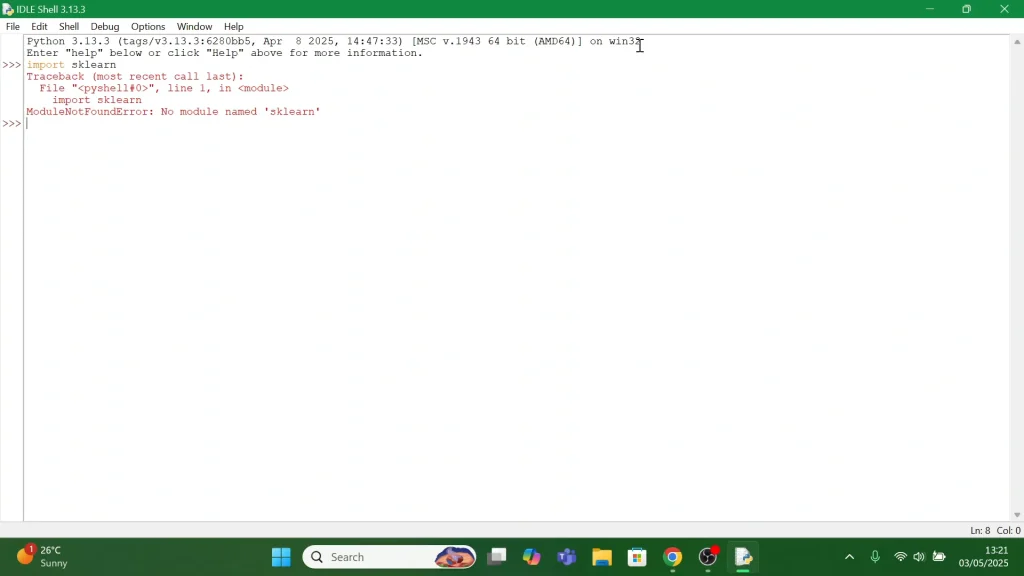
It’s also a good idea to have the latest pip. To verify the version of Python you’re running, type cmd in your computer’s search bar and press enter or select Run as Administrator.
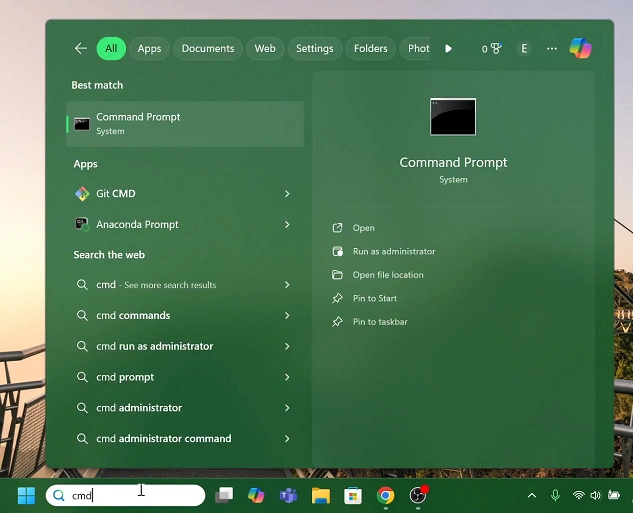
Here, enter the command, python –version and hit enter. As at May 2025, the latest version should return Python 3.13.3.
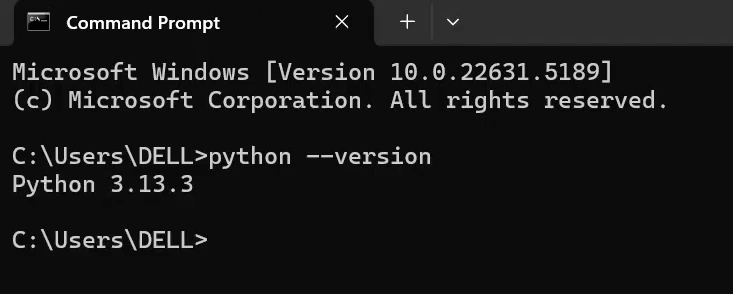
In the next command line, type pip install sklearn and press Enter.
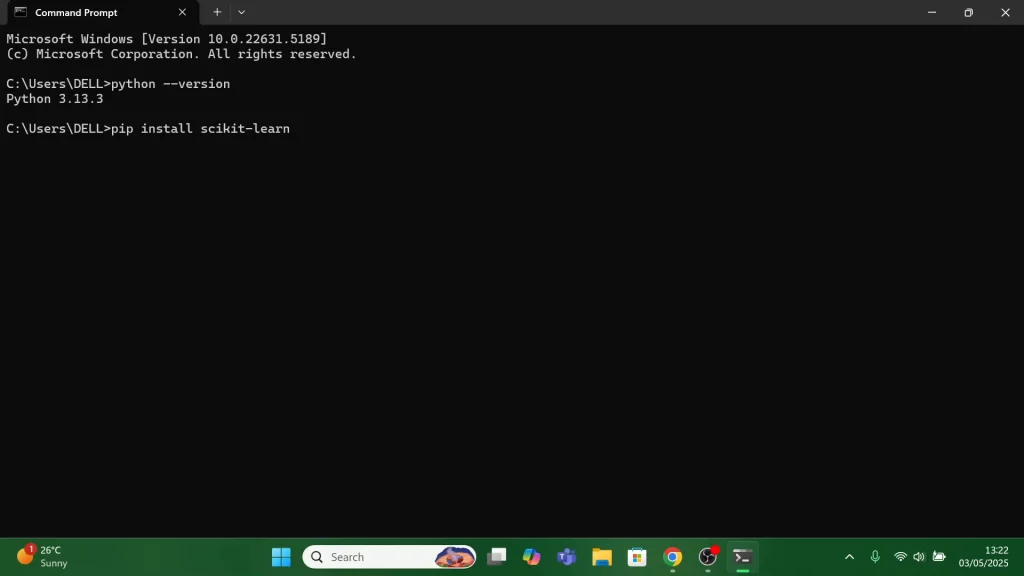
Give the package a few moments to install. You should receive a message that Scikit-learn has been successfully installed.
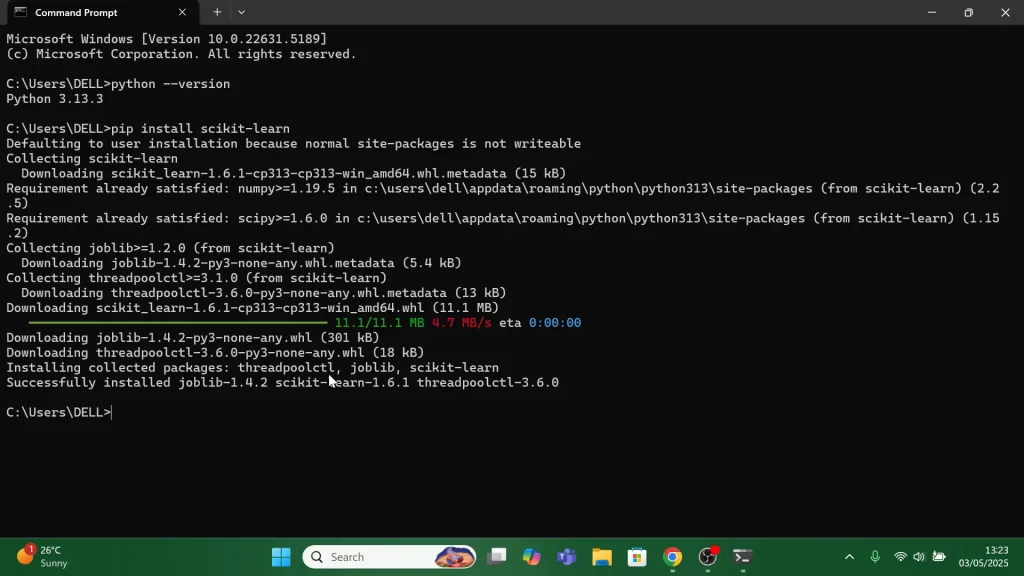
Launch IDLE once more and type import sklearn then press Enter. If the line plot shows up without errors, you’re good to go. It means that your Scikit-learn is installed properly and working correctly.
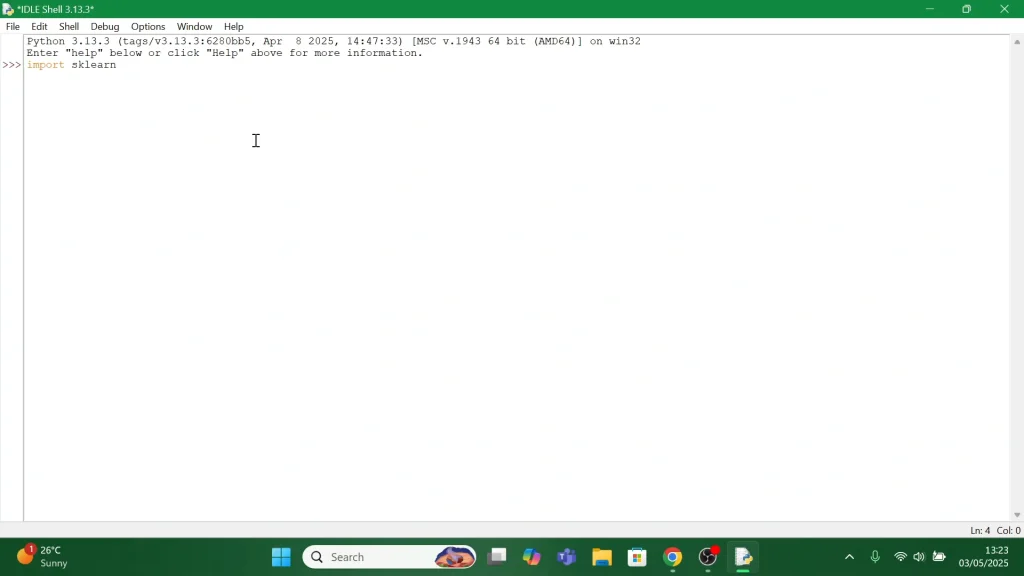
Once installed, explore core modules:
sklearn.linear_model: Linear & logistic regression
sklearn.ensemble: Random forests, gradient boosting
sklearn.cluster: K‑means, DBSCAN
sklearn.pipeline: Chaining transforms & models

